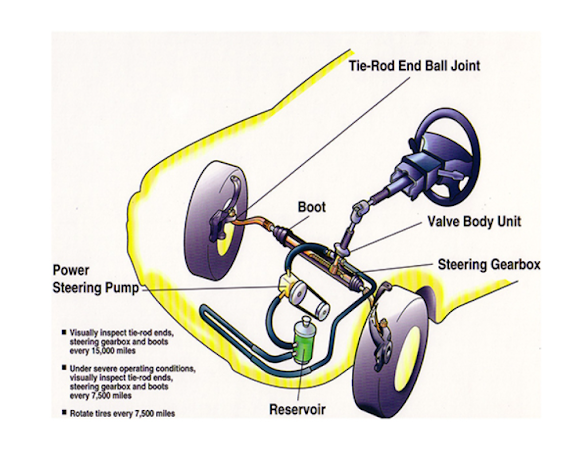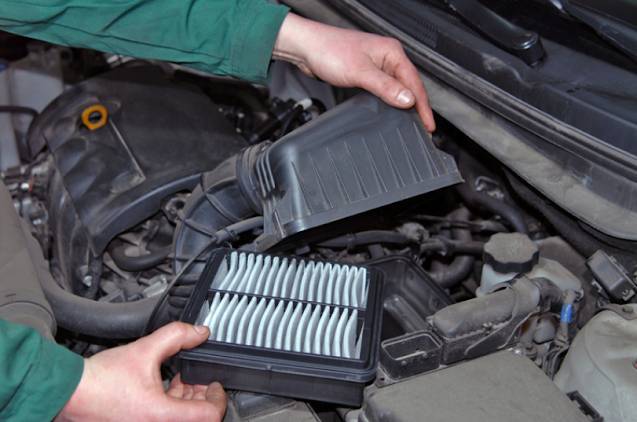Car Steering Repair: How to Repair Power Steering Pump, Rack and Box
The power steering feature has completely revolutionized modern cars. The power steering mechanism shares mighty importance by ensuring safe and hassle-free driving. This steering system in your vehicle helps drivers turn the vehicle easily without much effort. Without a power steering system, -it’s hard to turn a moving vehicle in any direction. A speeding vehicle with a poor powering system runs like a mad bull on the streets, which can cause some serious injuries and fatalities.
It’s undeniably important to get your routine car steering repair services done, as dirty power steering fluid can cause damage to the pump, steering rack, and gear. Overdue power steering fluid can lead to complete power steering failure.
If you’re in your infancy with the term “Power steering”, read till the end to reveal some important information to have a better picture of car steering repair and how it works.
What is the meaning of power steering?
In layman’s terms, power steering helps your car’s wheels turn in any direction with ease. Indeed, power steering has changed the ease of steering, but a lot happens under the surface to take a gentle turn.
In the broadest sense, a hydraulic system – like your car’s power steering is always under a great deal of pressure and requires a special kind of fluid to be filled up in a clean or good condition for their optimum functioning. Periodically, the powering system of your car requires timely car steering repair maintenance but has often been neglected or underestimated for long periods.
- Loose steering- This problem is mainly inside the steering rack or worm rods.
- Vibration in the steering wheel- A vibration that you might have experienced while turning the wheel shows contaminant buildup. Flushing the system can work.
- Grinding noise- Grinding noise mostly occurs when the steering fluid is low; head to a mechanic to resolve this issue.
- Screeching sound while turning the vehicle- This dangerous occurrence indicates that the belt which connects the motor to the steering pump is worn.
Three major reasons to service your car steering system
Count it honestly, how often do you service the power steering system of your car? Power steering is deemed one of the greatest innovations after the advent of wheels.
You might have noticed how incredibly power steering assists you in taking sharp turns, especially while parking the car. But, power steering services are mostly overlooked, leading to severe consequences. Let’s review why Car steering repair maintenance is so essential for your vehicle-
- Power steering fluids get expired or break down over time. Car steering fluid buildup dirt and debris over time. It will eventually wear out altogether. Power steering services will replace the old overdue fluid with the fresh one for all its operating needs.
- The power steering belts can break or stretch. Your mechanic will check the quality and condition of the power steering belts. With timely services, you can determine the condition of your power steering belts before they tear off completely.
- Car steering failure can lead to a very dangerous situation. Steering failure is the worst nightmare that can ever happen when you’re speeding above 60 or 80. It can lead to serious accidents, which result in severe injuries and even fatalities.
How to do a DIY car steering repair service?
Replace the filter every year
Most drivers aren’t aware that there’s a power steering fluid filter that must be changed every year. Keeping the fluid in good condition and free-flowing is essential to prevent tearing and wearing it on your pump.
Change the pump if needed
Bad fluid conditions and low fluid levels can severely affect your power steering pump functions. You may hear screeching or whining noise that indicates your pump is about to fail. It’s always recommended to have it checked by acton car service professionals that provide maximum quality services and maintenance down to earth prices.
Examine the car steering fluid
You can inspect the quality of fluid by taking a small sample to determine the colour and check if there’s any dirt or grime. The darker the fluid, the poorer it is. If the fluid is dark in colour and has small particles floating on the surface, it’s time to get replaced.
What if the steering rack goes bad?
A faulty steering rack will make your vehicle wander a little. You may feel hard to keep your vehicle steady. Your vehicle may veer to the left or right even if you aim to drive straight.
What are the symptoms of power steering rack failure?
The common symptoms of a faulty power steering rack are that you may notice your steering feels loose and has excessive play. You may notice other symptoms, which include the following-
- Loose steering
- Steering wheel shakes
- Clunking noise
- Wheels don’t return to the centre.
- Excess slack
- Looseness in the steering wheel
- Vehicle unstable on highway
How to replace the power steering rack?
Turn off your vehicle from the ignition and double-check that your steering wheel is locked. Place the wheels in a straight-ahead position. The steering wheel should be placed in the centre position.
- Now lose all the wheel lug nuts.
- Raise your vehicle with approved jack stands
- Crack loose both front wheels
- Remove the Steering Shaft Coupler Outer Seal and unbolt the upper pinch bolt on the Steering Shaft Coupler assembly.
- Remove the power steering rack mounting bolts, or crack the power steering high pressure and return lines.
- Remove the power steering high pressure and return lines.
- Put a drain pan under your car and remove the hydraulic power steering pressure hose and power steering return hose from the power steering rack.
- Now comes the interesting part, twist and turn and jiggle it out through one of the wheels well opening.
- If the new rack has new tie rod ends, measure the overall length of the old rack and tie rod assembly. Set the overall length of the new assembly to this same dimension by twisting the tie rod ends on their threads. Keep the rack centred and split the overlap difference between the left and right rod ends, or the steering wheel will be off-centre when you’re done.
- If you reuse the old tie rod ends, crack the lock nuts loose. Count how many full turns it takes to remove the tie rod ends. Centre the new rack and install tie rod ends the same number of turns on the new rack. Again, check the overall length and split the difference.
- Install the new rack using the same words you used to get it out.
- If required, reconnect the power steering lines using new “O” rings. Usually, the high-pressure line uses a slightly larger “O” ring, so be careful not to mix them up.
- Reconnect the Steering Shaft Coupler assembly and bolt the rack back into place.
- Reattach the tie rod ends to the steering knuckles. Use new cotter pins for the castellated nuts; never reuse the old cotter pins.
- Put the wheels back on and torque the lug nuts to specifications.
- Remove the return line from the power steering pump and place the end into a bucket.
- Fill the power steering pump and start the engine until clean fluid comes out of the return hose. You may be able to install an inline filter in the return line to protect the new rack. I have known guys who have used fuel filters for this purpose.
- Have the front end aligned to reset the toe-in adjustment to specification, or the vehicle will handle poorly and wear out the tire quickly.







Comments
Post a Comment